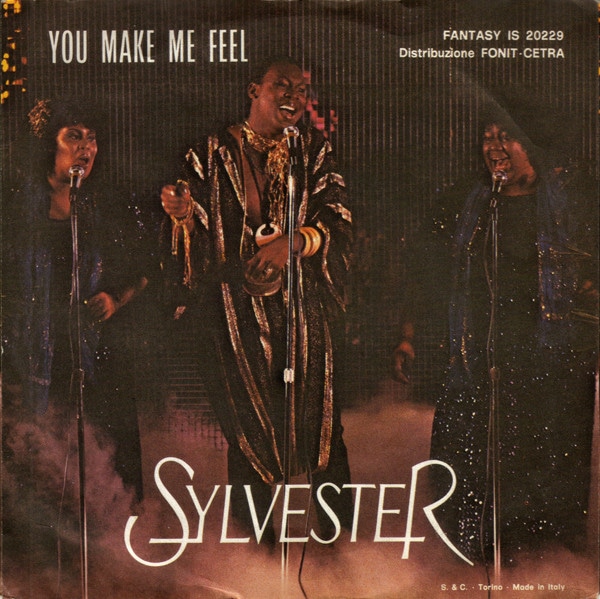When it comes to classic disco, you can’t help but dance to some songs. One moment you’re going about your day, and the next, you’re doing lip-sync in front of the mirror with a hairbrush. These tracks are so iconic that even if you knew nothing about the genre, you’d still be sure to see the song.

That’s the case with this week’s flashback track, “You Make Me Feel (Mighty Real)” by Sylvester. For this one, it’s all on the hook. That iconic chorus of falsetto singing, set against that pumping rhythm, is one of the most memorable pieces of music ever written. It evokes a glitter-drenched world of mirror-balls and dancing. It’s 1978 at its finest!
But who was the artist behind this bouncing beat? Sylvester James Jr.–known simply by his stage name of Sylvester–was an American Singer-Songwriter whose other contributions to the genre include “Dance (Disco Heat)” and “Do Ya Wanna Funk.”
As an artist, he was overflowing with style and charisma. One need only look at the music video for “You Make Me Feel (Mighty Real)” to see the sheer energy resonating off of this man.
Sylvester began singing at a young age with the gospel choir of his Pentecostal church; however, he left the church after being rejected for his homosexuality. Instead, he found friendship with the Disquotays, a group of black trans women and cross-dressers. He later joined the Cockettes–known for their iconic drag acts–before launching his solo career under the name Sylvester. He was also given the nickname “Queen of Disco.”
As well as being an icon of the Queer community, Sylvester was also an icon for the city of San Francisco, to which he was awarded the keys. In the ’80s, Sylvester worked as an activist, campaigning to stop the spread of the HIV/AIDS pandemic, tragically dying of the disease in 1988.
One year after Sylvester’s death, the song saw a resurgence in popularity after Jimmy Sommerville (of Bronski Beat and Communards fame) released a cover version.
When asked about the cover in interviews, Sommerville said that the original song had been released when acceptance of homosexuality was on the rise and that the HIV/AIDS pandemic created a “political backlash.” The cover, according to Sommerville, was an attempt to bring back that positive image of gay men.
The music video to Sommerville’s 1989 cover features shots taken from Sylvester’s original. At 1:58, Sylvester appears in a mirror and again at 3:35. Sommerville’s cover is a little fast and a little more high-energy, but otherwise, it’s very similar to the original and a wonderful tribute to an artist who died far too soon.
Sylvester James Jr. is, unfortunately, one of many Queer artists and activists who died as a result of the HIV/AIDS pandemic. However, the genre and music world as a whole owes a debt to Sylvester for popularising his camp, openly flamboyant aesthetic. He was an influential artist with a powerful voice who, amongst many other sing-songwriters, helped develop the disco style we all know and love today.





